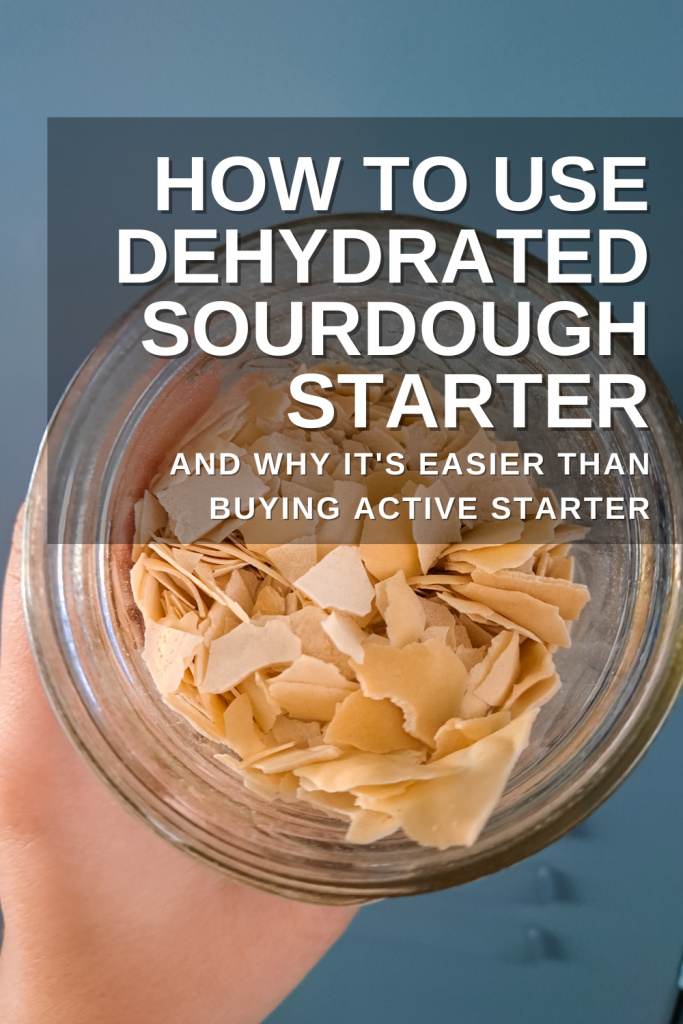Often beginners with sourdough will seek out an established, active sourdough starter so that they can try their hand at sourdough baking. Here’s why dehydrated starter is the better option and how to use dehydrated sourdough starter.
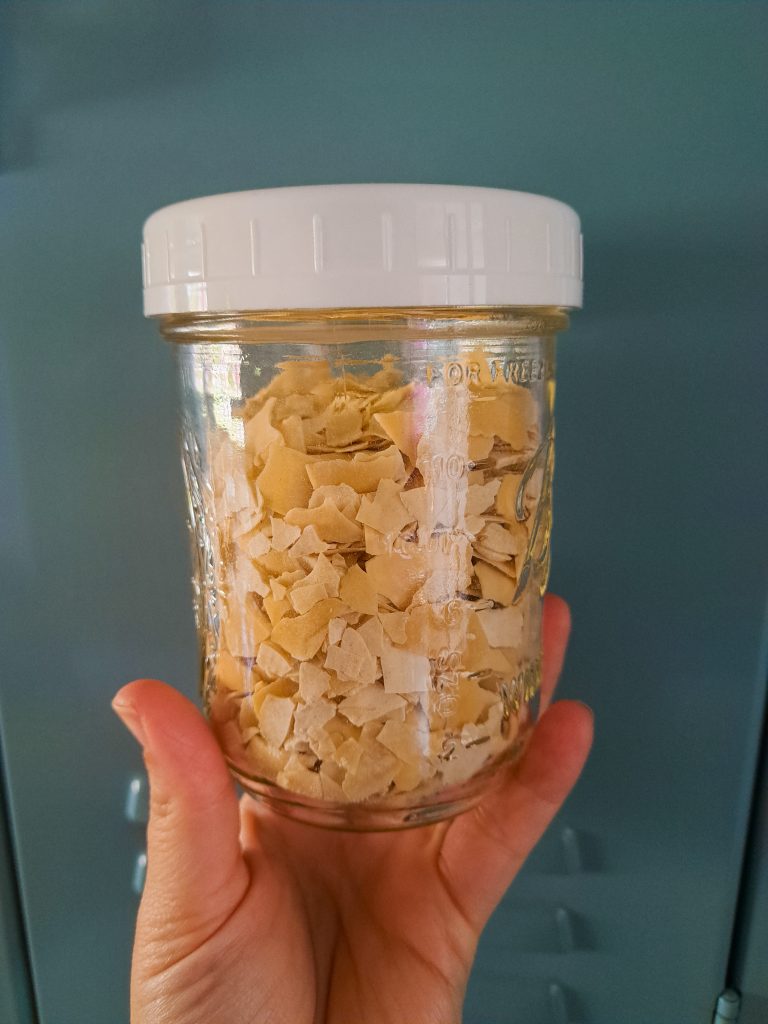
Usually what people have in mind for beginning their sourdough journey is an active, bubbly sourdough starter – not a dried, dehydrated starter. However, there are a number of reasons that using a dehydrated starter can be a much better and more sustainable option.
Shipping, mailing, and sharing an active sourdough starter has its drawbacks.
- It’s only “active” for 4 to 12 hours after it has been fed and needs to be fed again within 24 hours at the longest stretch.
- It is also more expensive to ship glass containers with an active sourdough starter, especially one which will not overflow or leak.
- Additionally, the sourdough starter that is active and bubble should be fed and used fairly promptly upon being received by it’s new owner.
On the other hand, a dehydrated sourdough starter has many benefits and perks.
- It is small and lightweight and can be shipped safely in an envelope.
- It does not need to be fed right away, and can be opened and used months or years after it has been obtained without going bad.
- The cost and ease of shipping is minimal, it almost costs nothing at all.
- Once you do start using your dehydrated starter, it can be ready to bake within 3 to 5 days at the longest – much less time than it takes to make your own sourdough starter completely from scratch.
But what if you don’t know how to USE dehydrated sourdough starter? Isn’t it complicated? Wouldn’t it be just as hard as making a starter from scratch?
So how do you use dehydrated sourdough starter?
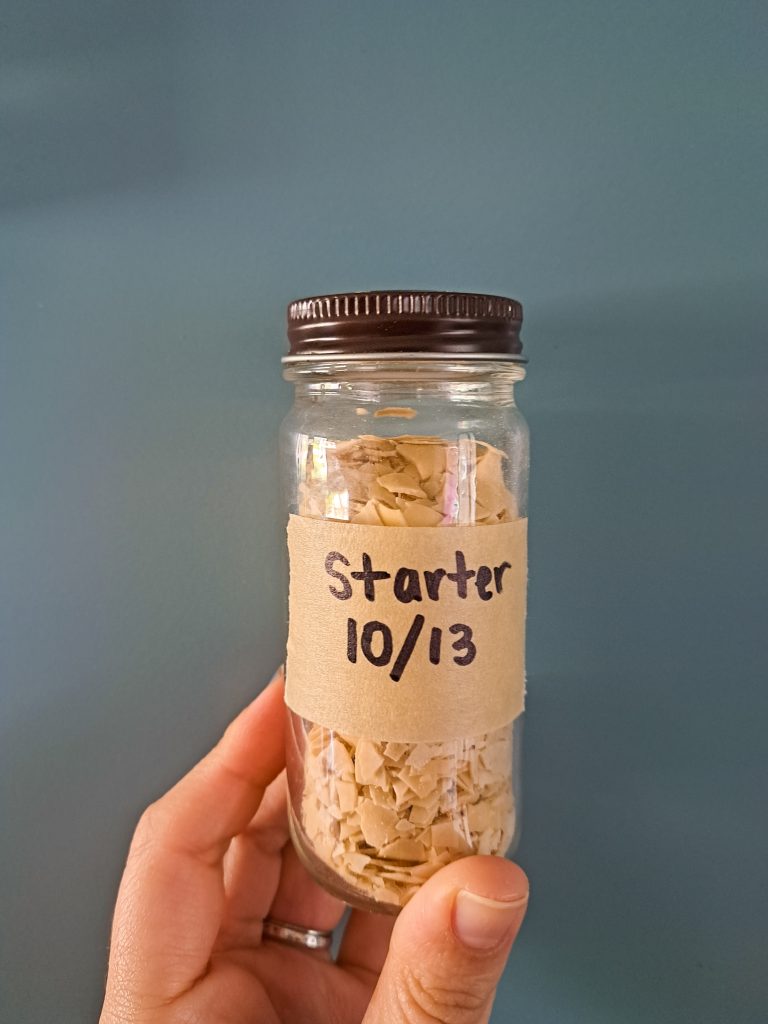
What IS dehydrated sourdough starter?
If you have obtained dehydrated sourdough starter, all that means is that it has been dried. So, rehydrating, or wetting it, is the first step.
Using dehydrated starter
Your starter is in flakes or ground to a powder (I greatly prefer powdered, but either way works). If your starter came with instructions for how much water to add to your quantity of starter, follow those instructions. In a glass container add the appropriate amount of powdered starter and water and mix thoroughly.
Allow the starter to sit this way, absorbing the water, for several hours to a full day. Then you will begin “feeding” the starter by adding unbleached flour and unfiltered water.
If you are curious why unbleached flour and unfiltered water are important, you can download my full instructions with tips, tricks, definitions, and explanations for free right here.
After this, in 12 to 24 hour increments for 2-3 days you will discard about half of your starter (so that you don’t end up needlessly feeding huge quantities) and then feed your starter its weight in flour and water.
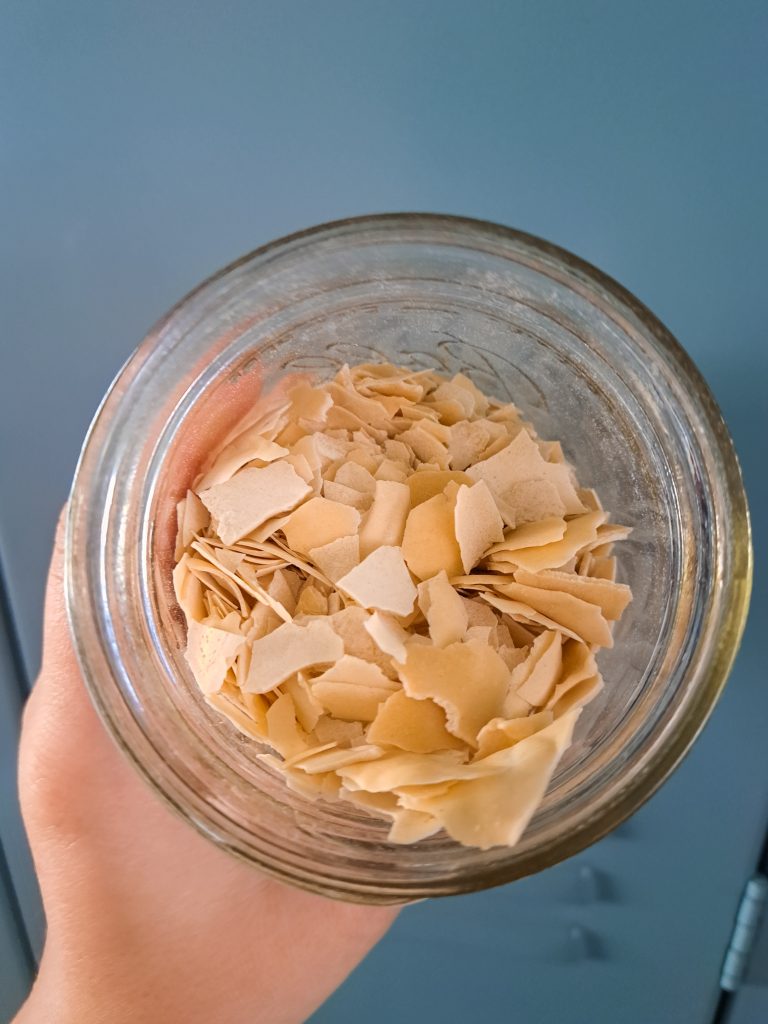
Measurements for dehydrated sourdough starter
So if you have 40g starter and it’s time to feed it, start by discarding about 20g, throwing it away in the trash, adding it to your compost, or feeding it to your chickens. Then, feed your starter by adding 20g water, mixing, adding 20g flour, and mixing. After each feeding your starter should be about the consistency of pancake batter.
After 3 days your starter should be bubbling and growing. This doesn’t happen immediately after feeding it at first. Check it about 4 hours after you’ve fed it to see if you can spot any bubbles. You can also mark the height on your container after feeding the starter, and see how far it grows above that line.
Starter should be kept in a warm spot to encourage growth but if it gets hot it can kill the beneficial bacteria that makes up sourdough.
When can you bake with dehydrated sourdough starter?
Your starter is ready for use when it grows to double 4-6 hours after a feeding. The true test is the water float test. Simply fill a small bowl half way with water, then use a spoon to take a dollop of starter and drop it into the bowl. If it floats it is ready to leaven your bread, and if it sinks it needs another round of discarding and feeding. Make sure to do the float test after the starter has doubled or grown significantly.
And that’s all you need to get your dehydrated sourdough starter going!
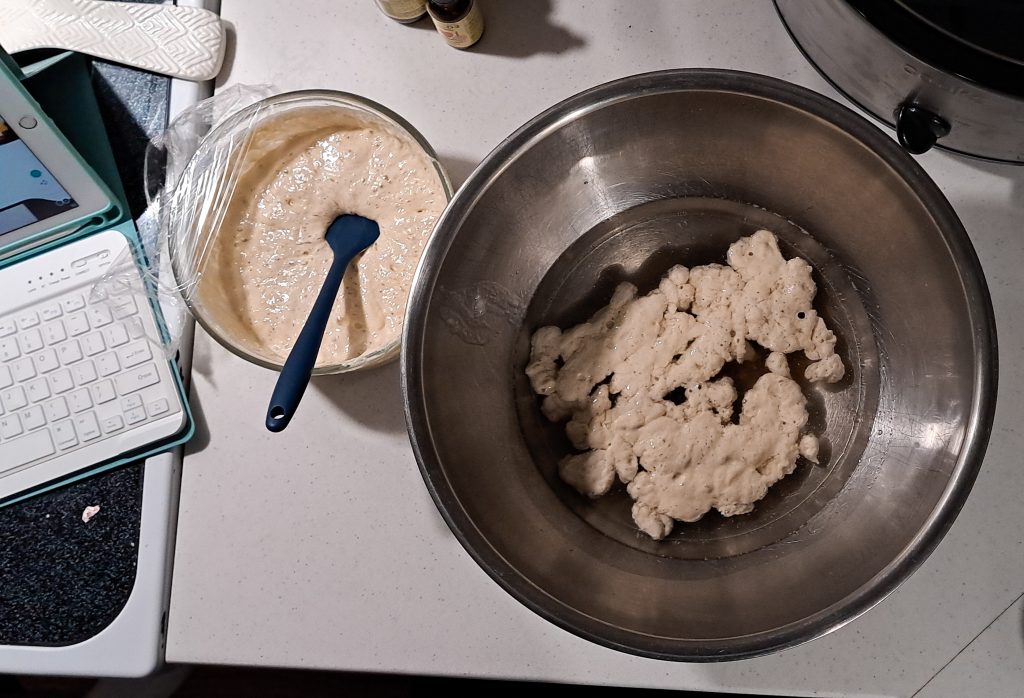
Where to buy dehydrated sourdough starter
If you would like to purchase dehydrated starter, each of my packets contains enough dried starter to do this whole process twice! So you can have room for “mistakes” if something doesn’t go well the first time, OR you can share the dehydrated starter with a friend. I also love to keep some dehydrated starter in my pantry in case something happens to my active bubbly starter.
Free dehydrated sourdough starter instructions pdf download
My packets come with a print out of instructions, which you can also download here for free!
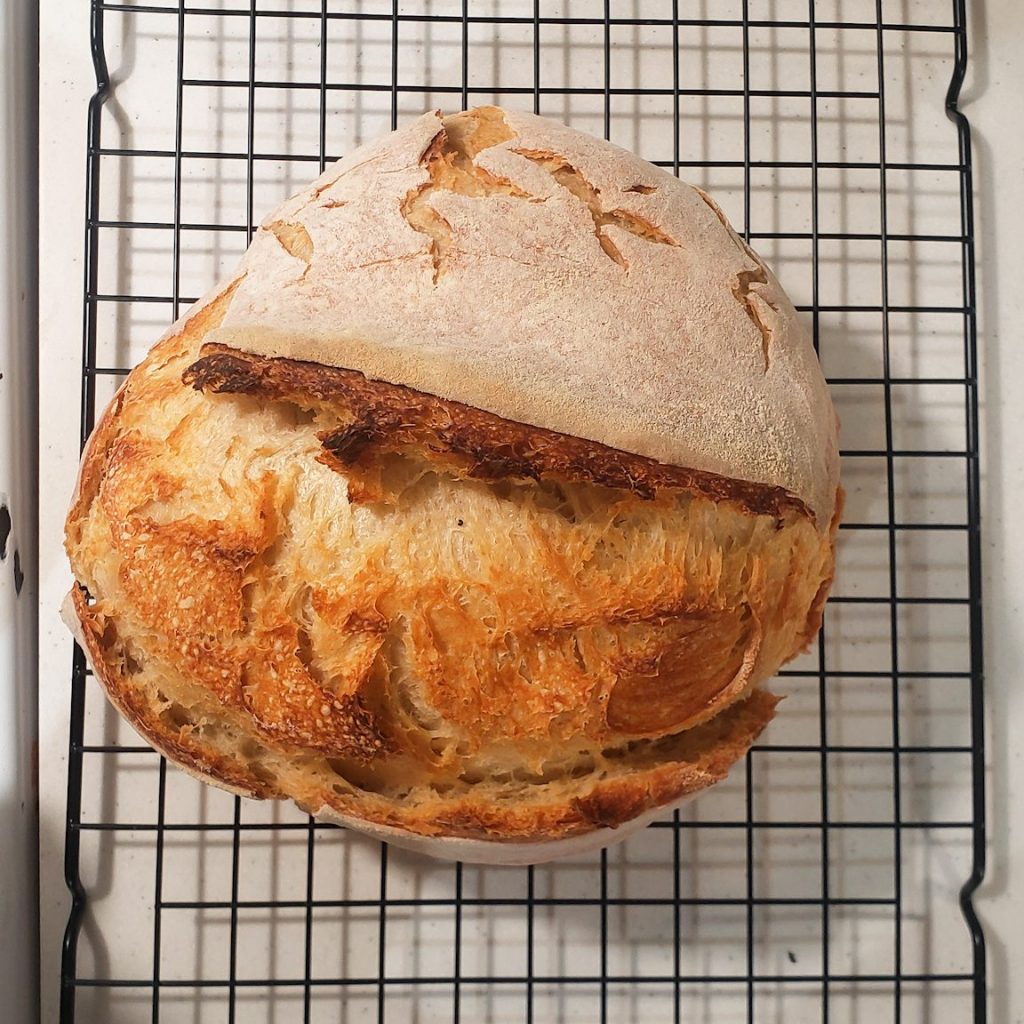
Happy baking!
